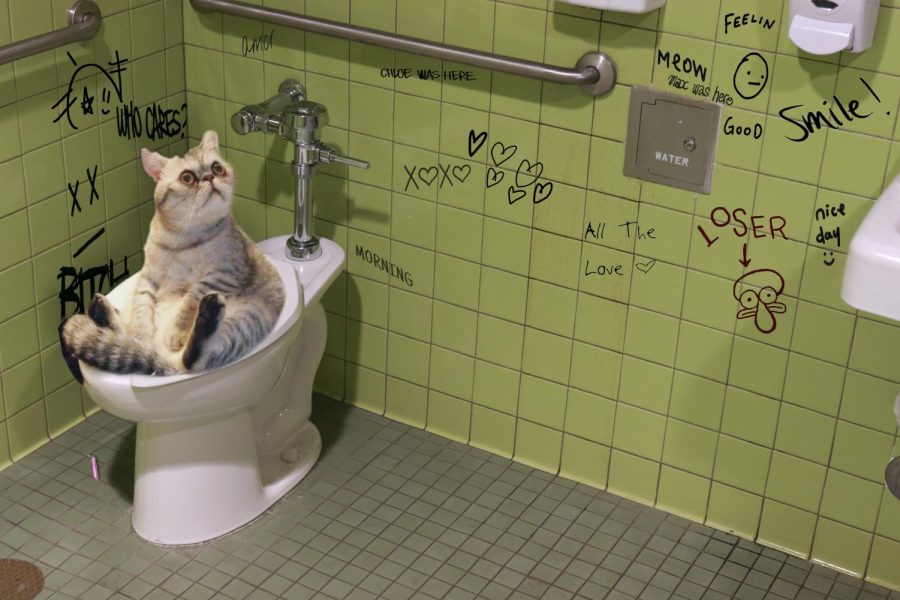Reasons Flushing Cat Poop Down Your Toilet Is Bad - Suggestions for Proper Handling
Reasons Flushing Cat Poop Down Your Toilet Is Bad - Suggestions for Proper Handling
Blog Article
What are your ideas on Don’t flush cat feces down the toilet?

Introduction
As feline owners, it's necessary to bear in mind exactly how we take care of our feline friends' waste. While it might appear practical to flush pet cat poop down the bathroom, this practice can have damaging effects for both the environment and human health and wellness.
Alternatives to Flushing
Fortunately, there are more secure and extra responsible means to take care of cat poop. Take into consideration the following alternatives:
1. Scoop and Dispose in Trash
One of the most usual approach of taking care of feline poop is to scoop it into a naturally degradable bag and throw it in the trash. Make sure to utilize a specialized litter scoop and deal with the waste immediately.
2. Use Biodegradable Litter
Select biodegradable pet cat trash made from products such as corn or wheat. These trashes are eco-friendly and can be securely gotten rid of in the garbage.
3. Hide in the Yard
If you have a backyard, consider hiding pet cat waste in a designated area away from vegetable yards and water resources. Make certain to dig deep enough to avoid contamination of groundwater.
4. Install a Pet Waste Disposal System
Buy a family pet waste disposal system specifically developed for cat waste. These systems use enzymes to break down the waste, decreasing smell and ecological influence.
Health and wellness Risks
Along with environmental problems, flushing pet cat waste can also present wellness risks to people. Pet cat feces may include Toxoplasma gondii, a bloodsucker that can create toxoplasmosis-- a potentially serious health problem, specifically for expecting females and people with damaged immune systems.
Environmental Impact
Flushing pet cat poop presents damaging pathogens and parasites into the water supply, posturing a considerable risk to water communities. These impurities can negatively affect marine life and concession water quality.
Final thought
Responsible pet dog possession expands past providing food and sanctuary-- it likewise involves appropriate waste administration. By avoiding purging pet cat poop down the toilet and going with alternate disposal techniques, we can reduce our ecological footprint and safeguard human health.
Why Can’t I Flush Cat Poop?
It Spreads a Parasite
Cats are frequently infected with a parasite called toxoplasma gondii. The parasite causes an infection called toxoplasmosis. It is usually harmless to cats. The parasite only uses cat poop as a host for its eggs. Otherwise, the cat’s immune system usually keeps the infection at low enough levels to maintain its own health. But it does not stop the develop of eggs. These eggs are tiny and surprisingly tough. They may survive for a year before they begin to grow. But that’s the problem.
Our wastewater system is not designed to deal with toxoplasmosis eggs. Instead, most eggs will flush from your toilet into sewers and wastewater management plants. After the sewage is treated for many other harmful things in it, it is typically released into local rivers, lakes, or oceans. Here, the toxoplasmosis eggs can find new hosts, including starfish, crabs, otters, and many other wildlife. For many, this is a significant risk to their health. Toxoplasmosis can also end up infecting water sources that are important for agriculture, which means our deer, pigs, and sheep can get infected too.
Is There Risk to Humans?
There can be a risk to human life from flushing cat poop down the toilet. If you do so, the parasites from your cat’s poop can end up in shellfish, game animals, or livestock. If this meat is then served raw or undercooked, the people who eat it can get sick.
In fact, according to the CDC, 40 million people in the United States are infected with toxoplasma gondii. They get it from exposure to infected seafood, or from some kind of cat poop contamination, like drinking from a stream that is contaminated or touching anything that has come into contact with cat poop. That includes just cleaning a cat litter box.
Most people who get infected with these parasites will not develop any symptoms. However, for pregnant women or for those with compromised immune systems, the parasite can cause severe health problems.
How to Handle Cat Poop
The best way to handle cat poop is actually to clean the box more often. The eggs that the parasite sheds will not become active until one to five days after the cat poops. That means that if you clean daily, you’re much less likely to come into direct contact with infectious eggs.
That said, always dispose of cat poop in the garbage and not down the toilet. Wash your hands before and after you clean the litter box, and bring the bag of poop right outside to your garbage bins.
https://trenchlesssolutionsusa.com/why-cant-i-flush-cat-poop/

I was brought to that editorial on How to Dispose of Cat Poop and Litter Without Plastic Bags through an associate on a different web page. If you appreciated our post please remember to share it. Thanks a lot for your time. Don't forget to check up our blog back soon.
Schedule Your Service Report this page